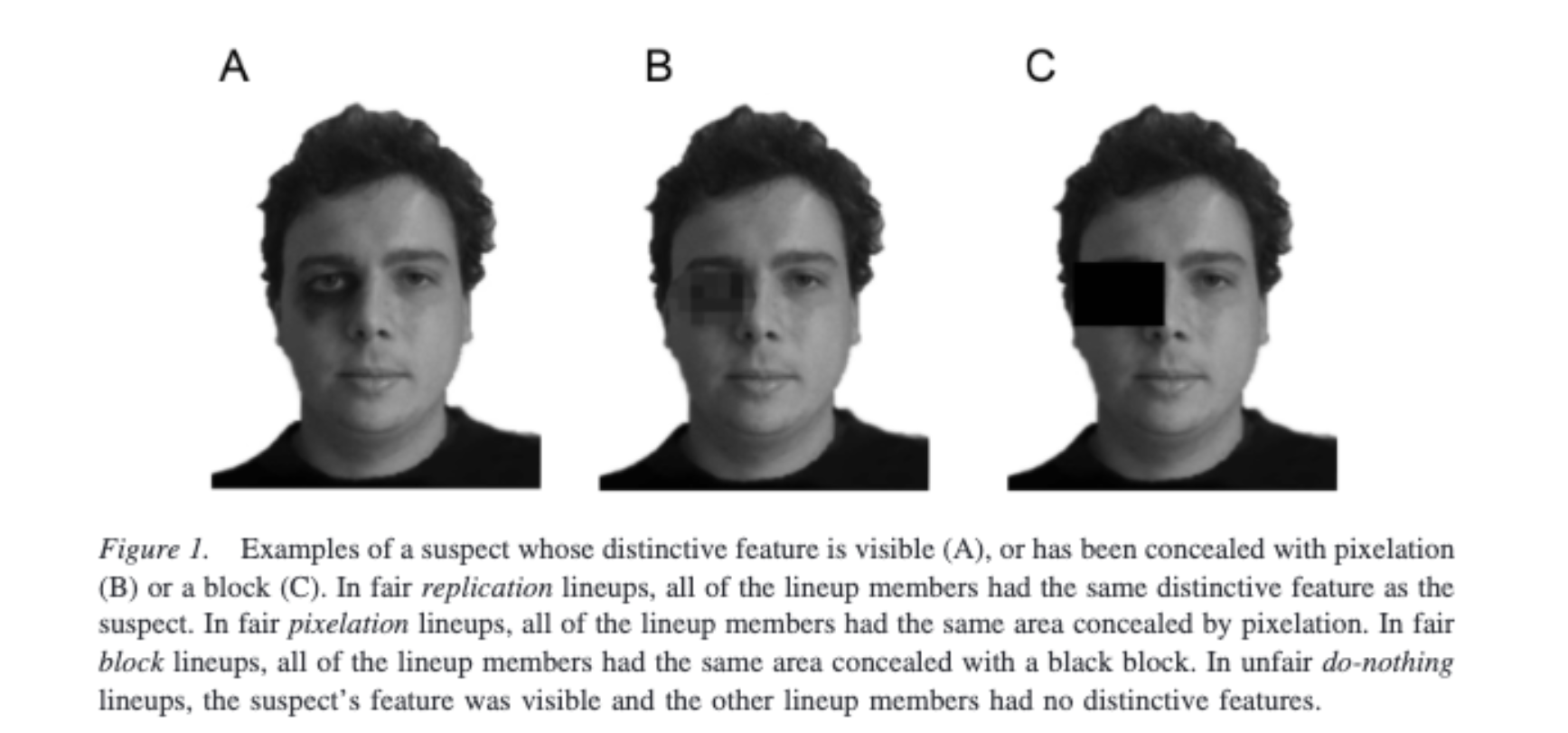Constructing and administering identification parades

One strand of Prof Kim Wade’s research has explored how best to construct and administer identification parades. Much of this work has been conducted in collaboration with her former PhD student, Dr Melissa Colloff (now at Birmingham University) and US-based colleagues at John Jay College of Criminal Justice (Prof Deryn Strange) and UC: San Diego (Prof John Wixted). Read more..
This research has largely focussed on the idea that unfair identification parades (i.e., parades in which the police suspect stands out from the other parade members) make witnesses more willing to identify the suspect even if that suspect is innocent.
For example, Wade and colleagues have examined whether unfair identification parades influence witnesses’ ability to distinguish between innocent and guilty suspects and their ability to judge the accuracy of their identification decision. In 2016, they published a large-scale experiment with over 8000 participants (Colloff, Wade, & Strange, 2016). In this experiment, they tested three different techniques that police commonly use to prevent suspects with distinctive facial features (e.g., a facial tattoo) from standing out in identification parades. Those techniques include pixelating or covering the suspect’s distinctive feature, or replicating the distinctive feature across everyone in the parade). The findings of this work revealed that leaving a suspect to stand out in a parade, compared to making efforts to prevent him from standing out, not only increased participants’ willingness to identify the suspect but also markedly impaired their ability to distinguish between innocent and guilty suspects. Participants were also asked to state how confident they were in their identification decision and the findings showed that when a suspect is left to stand out, a witness’s confidence rating is a poor indication of how accurate their identification decision is likely to be.
Wade and colleagues have extended this work by exploring the ways in which identification decisions change with age (Colloff et al., 2017) and their results have contributed to theoretical debates about the mechanisms underpinning identification decisions (Colloff et al., 2018).
